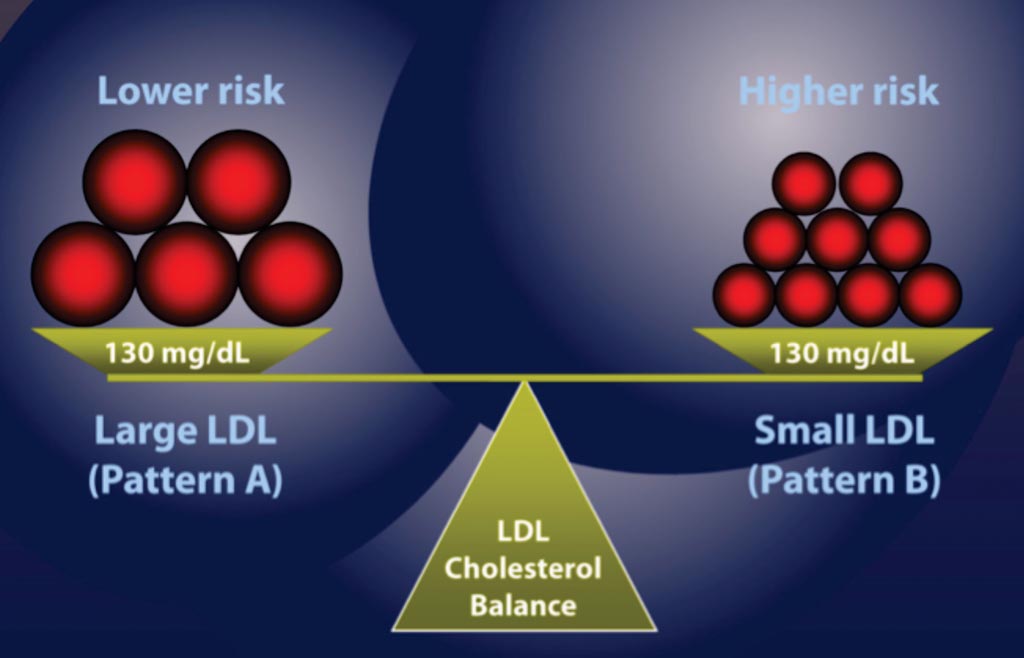Increased Triglyceride Content Associated with Plasma Lipoprotein Lipase
By LabMedica International staff writers
Posted on 15 Feb 2017
Non-fasting plasma triglyceride (TG) reflect a higher risk for cardiovascular disease (CVD) than TG in the fasting plasma and this the postprandial increase of TG is the most common form of hyperlipidemia which is associated with increased remnant lipoproteins (RLP) as a risk factor for CVD.Posted on 15 Feb 2017
It has been reported that the fasting TG concentration was not an independent cardiovascular risk factor, while RLP-cholesterol (RLP-C) was an independent risk factor in the fasting plasma in women. Therefore, it is necessary to investigate the difference between fasting and postprandial TG and RLP.

Image: Small, dense LDL particles have less anti-oxidants and are associated with a much higher risk of atherosclerosis. Large, buoyant LDL particles are rich in anti-oxidants and present a much lower risk of oxidizing than the small, dense LDLs (Photo courtesy of Dr. David Jockers).
An international team of scientists working with those at Gunma University Graduate School of Medicine recruited 54 volunteers (30 males and 24 females, aged 28 to 63 years) who were without evidence of CVD, diabetes or other chronic disease for the oral fat load test. TG and RLP-TG together with other lipids, lipoproteins and lipoprotein lipase (LPL) in both fasting and postprandial plasma were determined in generally healthy volunteers and in patients with coronary artery disease (CAD) after consuming a fat load or a more typical moderate meal.
RLP-C and RLP-TG were determined using an immunoseparation method and Small Dense Low Density Lipoprotein cholesterol (LDL-C) was also determined by a commercial kit. The team found that RLP-TG/TG ratio (concentration) and RLP-TG/RLP-C ratio (particle size) were significantly increased in the postprandial plasma of both healthy controls and CAD patients compared with those in fasting plasma. LPL/RLP-TG ratio demonstrated the interaction correlation between RLP concentration and LPL activity The increased RLP-TG after fat consumption contributed to approximately 90% of the increased plasma TG, while approximately 60% after a typical meal. Plasma LPL in postprandial plasma was not significantly altered after either type of meal.
The authors concluded that non-fasting TG concentrations to be stronger predictor for the risk of CVD than fasting TG, because of the higher concentration of a larger sized RLP particles expressed as higher RLP-TG along with a small amount of LPL in the postprandial plasma compared to the fasting plasma. Therefore, non-fasting TG measurements performed 3 to 6 hours after food intake may be able to take the place of the direct measurement of RLP-TG for the assessment of cardiovascular disease risk. The study was published in the February 2017 issue of the journal Clinica Chimica Acta.









 assay.jpg)




